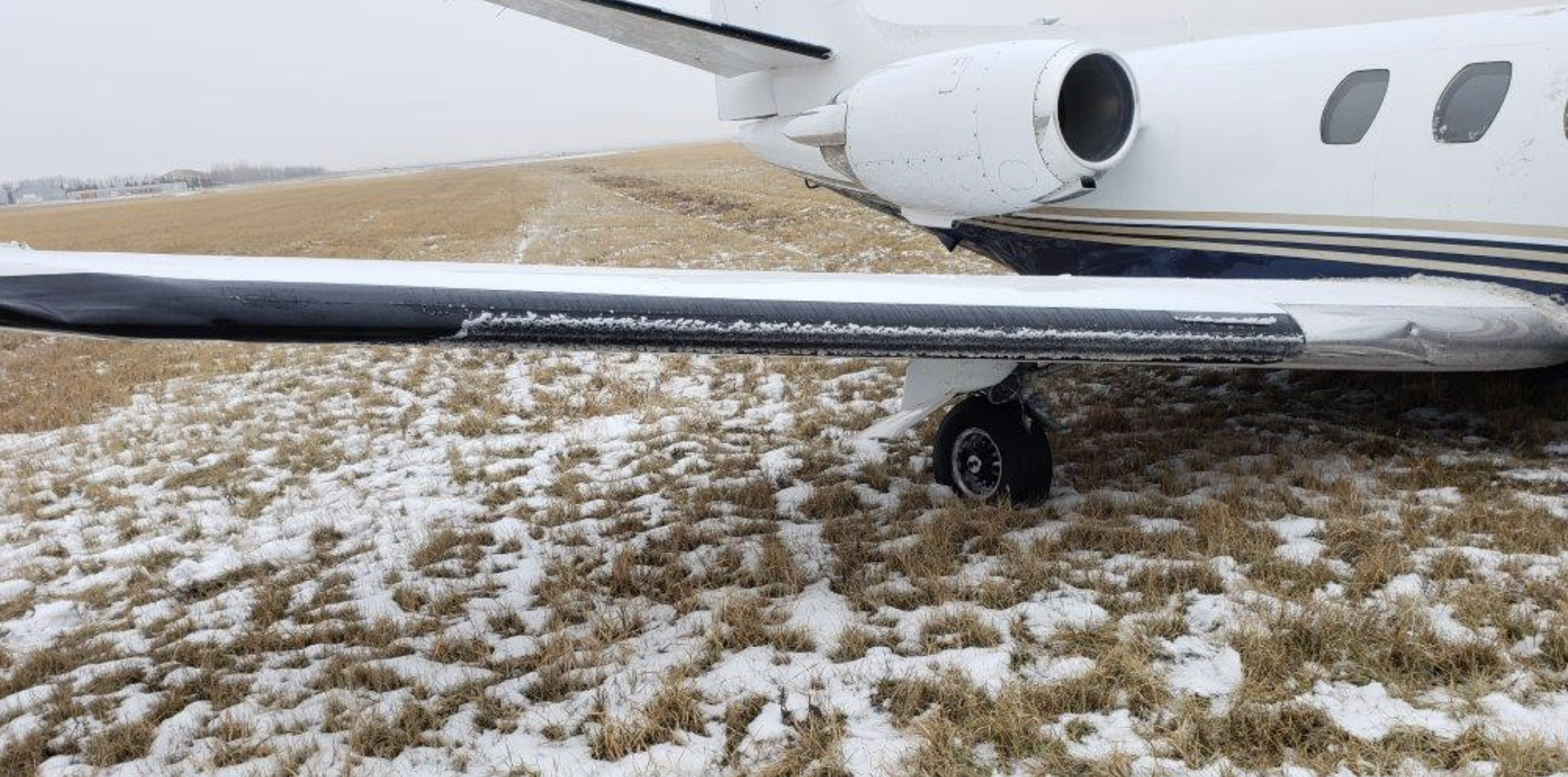
The adequacy of the Cessna Citation’s stall warning system in icing conditions was very much the topic of interest in the investigation of the crash of a CE 560 Citation II near Pueblo, Colorado, on Feb. 16, 2005.
The airplane stalled 4 nm east of Pueblo Memorial Airport (KPUB) while on an ILS approach to Runway 26R in icing conditions. All eight persons on board were killed. When the stall occurred, the airplane was 1,500 ft. above the ground. At the Citation’s weight and configuration, its no-ice stall speed should have been 76 kt. based on the Cessna airplane flight manual, and its stall speed in icing should have been 81 kt. The airplane stalled at about 90 kt. It was being flown at a speed well below the recommended approach speed in icing of 114 kt.
Unlike the Cessna 550 in the 2018 Fargo, North Dakota, accident, the Pueblo Cessna 560 was equipped with a stall warning system. It consisted of an angle-of-attack vane, indicator, indexer, computer and a stick shaker mounted on the forward side of the pilot’s control column. The shaker was designed to activate at 7% above stall speed. The airplane was also equipped with a dual-mode AOA computer that added 5 kt. to the stall warning activation speed when engine anti-ice was turned on. A sound spectrum analysis of the CVR showed that the shaker first activated 1 sec. after the loss of control, near the speed it was programmed to activate but too late to alert the crew to the danger.
The NTSB concluded that the FAA’s certification standards for flight in icing were inadequate and wrote six recommendations to address the problem. The last one, A-07-17, sought to have the CE 560’s stall warning system changed to improve its warning margin in ice, including thin, rough ice on or aft of the deiced surfaces.
After five years of testing and discussion, the FAA decided that CE 560 AOA sensors needed to be recalibrated but that the stall warning standards were adequate. The NTSB somewhat reluctantly agreed and closed the recommendation as having received acceptable action.
It doesn’t look like the FAA is going to be requiring any change to the early Citations’ stall warning system. That being the case, if you are flying an early model Citation, whether equipped with a stick shaker or not, you would be wise not to depend too heavily on a stall warning when you are in any kind of icing conditions. The airplanes may be forgiving in many flight regimes, but not in ice.
Non-Certificated Charters
From the factual information provided in the NTSB’s docket on the Fargo accident, I think it’s pretty clear the pilot, the passengers and the airplane’s lessee knew the flight was operating outside the rules of commercial charter spelled out in FAR Part 135. Setting aside for a moment the legalities, let’s look at the safety implications of this non-certificated charter flight.
First, the operator of a charter flight has to be clearly responsible for initiating, conducting and terminating the flight, and he has to do so according to FAA regulations. When there is uncertainty about who plays that role, it is all too easy for the financial or personal concerns of one of the parties to take precedence over sound aeronautical judgment. In the Fargo case, the pilot, the lessee and the organizing passengers all expressed uncertainty about who was really in charge.
The flight was organized on the basis of having 10 passengers on an airplane certified to carry only eight. The pilot must have known better but apparently lacked the authority to refuse this obvious violation of federal rules.
A three-person couch had been improperly installed to replace two original passenger seats. The cable for the mid and aft seat-belt attachments failed when the airplane impacted the ground.
The factory-installed toilet seat was occupied during the landing even though it was not approved to be used during takeoff and landing. The seat belt installed on that seat was not approved by the FAA.
Electrical heating to the AOA probe was apparently not working, which would have made the AOA indicator inaccurate or inoperative.
The pilot did not meet the FAA minimum turbine flight-time requirements to be flying the airplane as a single pilot. Had a second qualified pilot been on board, he could have monitored the pilot’s airspeed and called out when it fell to unsafe levels. The second pilot could have operated or reminded the pilot to regularly operate the deicing boots as required. He could have reminded the pilot to extend landing flaps during the approach.
How would a Part 135 certificate have changed these risk factors? Being approved for Part 135 operations does not eliminate all risks. It does, however, put the right people in charge of assessing those risks.
An approved maintenance program would have been more likely to have spotted and fixed the 38-year-old airplane’s mechanical flaws. An approved training program would have been more likely to ensure the pilot met minimum experience requirements. A director of operations would have been responsible for seeing the rules were complied with.
The NTSB wrote six recommendations to the FAA in 2009 intended to reduce the risk of non-compliant charter flights. The FAA choose not to implement most of them. However, more recently the FAA has decided to be more proactive about enforcing Part 135 charter rules. You can read about its safe air charter program at https://www.faa.gov/about/initiatives/safe_charter_operations/
In addition, several industry organizations have undertaken programs to address illegal charters, including the Air Charter Safety Foundation, the National Air Transportation Association and the National Business Aviation Association.
If you are an airplane owner, an airplane lessee, a pilot or a passenger who is contemplating operating a charter flight without a Part 135 certificate, you might want to think twice about it. The risks are greater than you think.
Editor's Note: The first part of this article series examined another charter accident in icing conditions.





